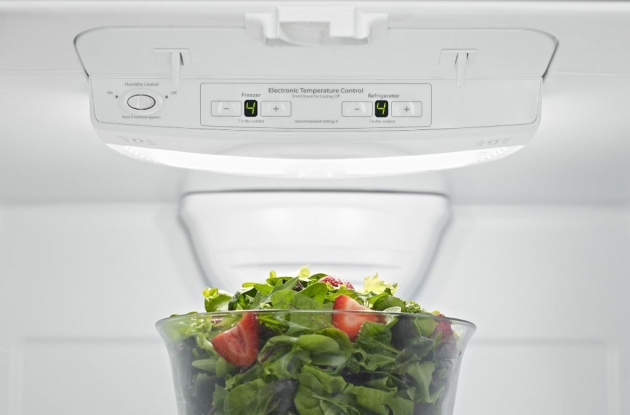We chill and freeze foods to keep them fresh and healthier for longer, and the temperature that we choose can make all the difference. If food is stored at the wrong temperature, it can spoil quickly, and there is a real risk of disease to consider. A modern refrigerator and freezer can keep food safe for days or weeks because it slows the growth of bacteria. But, if the temperature rises too far, the bacteria will multiply at an exponential rate, and food poisoning becomes a risk. In this article, we take a closer look at the correct temperatures for health and efficient food storage.
A Refrigerator Temperature
According to the U.S. Food and Drug Administration (FDA), the optimal refrigerator temperature is at or under 40ºF. But, the optimal refrigerator temperature may be lower in the 35-38ºF range. Why? Well, this temperature is as close as you can get to the freezing point without the food actually freezing. If the refrigerator temperature is at 40ºF, the bacteria begin to multiply, and that is what we want to prevent. When internal refrigerator temperatures climb above the aforementioned 35-38ºF range, the food can spoil quickly, and stomach upsets are more likely due to E.coli, Salmonella, and other microorganisms.
A Freezer Temperature
The FDA has stated that the ideal freezer temperature should be at or under 0ºF. The temperature should be kept as close to 0ºF as possible, and this is especially true when warm food is added to the freezer. Some freezers have a flash freeze feature that drops the temperature further for around 24 hours to prevent freezer burn on new items. This can be replicated manually if the temperature is dropped a few degrees for a few hours. But, this will drive up the energy bills, so it’s important to change the temperature back to 0ºF when you’re ready. If there is a significant buildup of ice inside the freezer, this is a sure sign that the temperature is too cold.
Taking Accurate Temperature Readings
Measuring the refrigerator and freezer temperatures accurately is important when you want to promote efficient food storage in your home. Modern appliances may come with a temperature gauge, but the accuracy can vary a great deal. It is possible to set the refrigerator to 37ºF, and the temperature gauge is reading it wrong. In fact, it’s pretty common for a refrigerator to be 1-3ºF off the temperature that you want. To remedy this problem, there is a simple solution if you add a separate refrigerator and freezer thermometer to double-check the temperature in each unit. These gauges are inexpensive and readily available, and they are a must for models that have no display temperature gauges installed.
How to Use a Separate Thermometer
The thermometer should be placed in the freezer, and another should be located in the freezer. They should be left in place for at least 20 minutes to take an accurate temperature reading. After this period, remove them and compare them to the built-in temperature gauge if you have one to see if they match. If they are close, you can make accurate adjustments using the basic 1-5 rated temperature dial until you achieve the optimal temperature. Make minor adjustments until you’re happy, and the refrigerator and freezer should be able to maintain that temperature. Regular checks are advisable, but if the appliance is working well, there should be no problems.
If you are considering a new refrigerator/freezer for your kitchen, you can explore your options with this online collection or contact a home appliance specialist for further help and guidance.

